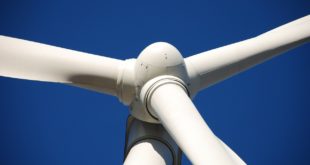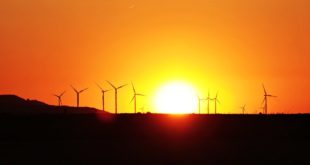In a recent energy study review entitled “The Benefits of 20% Wind Energy by 2030,” it says people around the globe could very well eliminate 15,200 million pounds of carbon dioxide and greenhouse gas emissions by the year 2030 as well as over 2 times that amount by the year 2050.
If we were to grow our use of wind power by roughly 20%, we would also be able to cut down water usage in the electrical market by 8% (4 trillion gallons). This might reduce natural gas interest and costs by 12%, saving the public nearly $130 billion.
Clearly, methods to reduce energy costs are now front and center.
Basic Reasons in Favor of Wind Energy
When thinking through wind energy positives and negatives, you should additionally consider the positive aspects of utilizing turbine wind power. First of all, wind mills supply a clean domestic basis of power.
The wind will never quit blowing, therefore delivering a continuous basis of electrical power if we harness it effectively with the best suited backup generators. This zero cost form of power will not create greenhouse gases, create radioactive waste material or give off pollutants either.
When compared with solar supply – geothermal and biomass energy – wind power is comparatively low priced. The US Department of Energy conjectures that alternative wind power will run only 4 to 6 cents per kilowatt hour in the upcoming years.
Precisely Who Benefits?
Advantages from using wind energy are not simply pertaining to government authorities or corporate people, but also for substantial numbers of citizens as well as population centers which additionally tap into huge alternative wind power turbines linked to a utility grid.
Ongoing innovative developments are targeted at generating cutting edge designs so that individual people and companies are able to assimilate these systems on their private property as well. Farmers and landowners may well sell portions of their land to be developed as wind farms, which adds a fiscal bonus.
In addition, wind farms and manufacturing centers draw various jobs to a local community, which include safety personnel, managers, engineers, assembly workers, administrators, mechanical operators, environmental impact assessment surveyors, truckers, and trainers.
Disadvantage Considerations
So how about some of the drawbacks presented by wind created power?
A number of people find the overall look of tall groupings of wind mills as being ugly and unnatural.
Additionally, the University of Massachusetts has reported that wind power turbine generators usually are very loud any time wind speed is slow. They tell us that the disturbance from each different turbine is roughly the same as one car traveling at 70 miles per hour.
The sound has moreover been referred to as a “large rock wrapped in a towel turning in a tumble dryer,” and “like someone was mixing up cement in the air,” or “comparable to a train which never arrives.” As one US resident deadpanned, “Wind mills don’t become great neighborhood friends.”
In some Canadian scientific studies, it has been discovered that citizens located around windmill farms made note of suffering from painful headaches, even though this potential threat has not at this point been scientifically demonstrated.
Whether or not a windmill is in your sights, creative energy saving strategies are hot on people’s minds.
Grab useful things to know in the sphere of Free Traffic System – please make sure to study the site. The time has come when proper info is truly within your reach, use this opportunity.
 Alternative Energy HQ solar power for homes, wind energy, and bio fuel issues
Alternative Energy HQ solar power for homes, wind energy, and bio fuel issues







The question is how big a windmill device does a residential property require for constant harnessing of the power??
The question is how big a windmill device does a residential property require for constant harnessing of the power??
I had never assumed that wind power could have drawbacks.